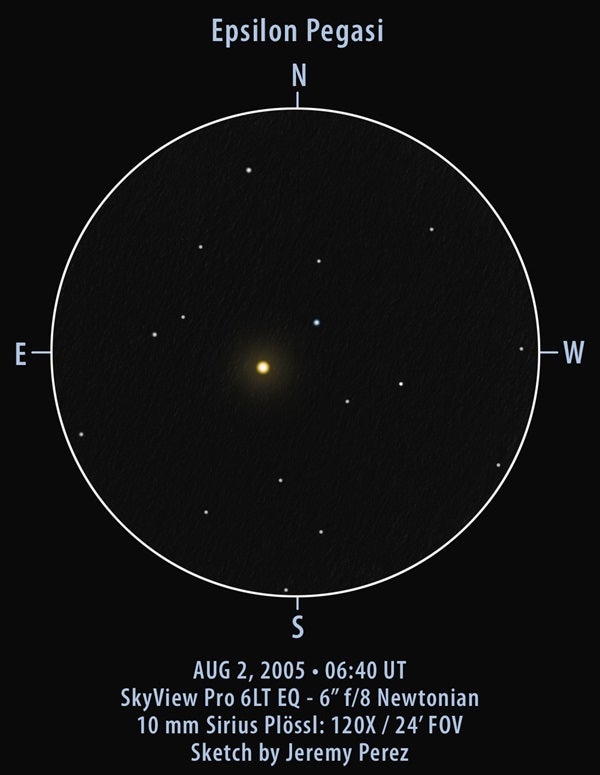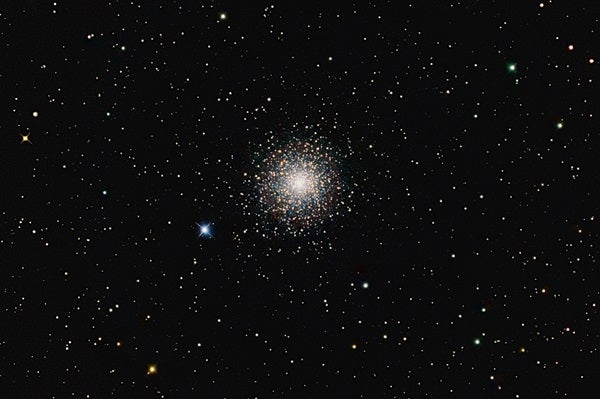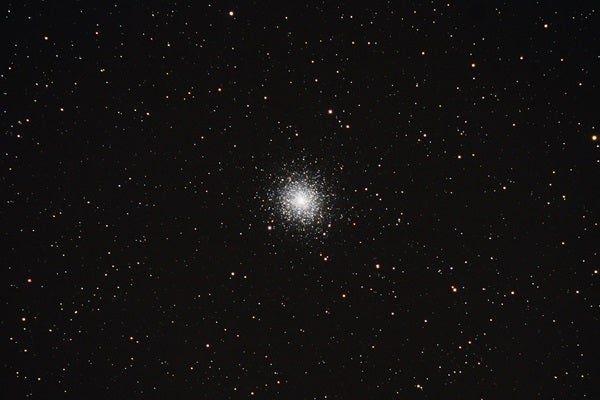Surrounding our galaxy are 150 huge swarming spheres of stars known as globular clusters. Each contains hundreds of thousands of old low-mass red and intermediate-mass yellow suns. Astronomers think the average age of those stars is at least 10 billion years old.
This month, let’s visit two bright globular clusters visible from mid-northern latitudes.
We can use the star Enif (Epsilon [ε] Pegasi) at the tip of Pegasus’ nose as our starting point. Through binoculars, Enif has a yellowish glint. That’s because we are looking at a spectral K-type supergiant. Enif is 670 light-years away, and its total luminosity output is 6,700 times greater than our Sun’s. It is also 185 times larger. If Enif replaced the Sun, its edge would extend nearly to the orbit of Earth.
But time is short for Enif. Studies suggest that within a few million years, it will lose its battle against aging. At that point, it will either explode as a supernova or expel its outer layers as a planetary nebula and the core will collapse into a rare neon-oxygen white dwarf.
Onward to our first globular cluster, M15. It floats just 4° northwest of Enif, so it should fit into the same field of view. M15 was discovered by Italian astronomer Giovanni Maraldi in 1746. Charles Messier first saw it 18 years later. In Messier’s words, M15 is a “nebula without a star. … It is round, in the center it is brilliant.” This is an apt description through modern binoculars as well. Not any of its 100,000 or more stellar denizens are resolved through binoculars, although I get a sense of “graininess” when I look at it through my 25×100 giants.
Those surrounding stars appeared identical to Kustner 648 in visible-light images, which triggered Pease’s curiosity. Up to this point, Kustner 648 was thought to be just another star cataloged by German astronomer Friedrich Kustner. But Pease’s results were unmistakable. He had detected that Kustner 648 was no star at all; it was a planetary nebula. Now cross-listed as Pease 1, this was the first planetary nebula to be discovered within a globular cluster. Even today, nearly a century later, only three others are known.
Our second globular cluster, M2, lies in Aquarius. From M15, shift your aim 13° to the south. Like M15, M2 was also discovered by Maraldi in 1746. Not only do they share the same discoverer, M2 and M15 are both a little over 33,000 light-years away.
As you go back and forth between M2 and M15, you’ll pass near a challenging binary star, 3 Pegasi. Stop and take a look. Binoculars show that this 6th-magnitude sun is accompanied by an 8th-magnitude companion separated by 39″. That’s barely resolvable through 10×50 binoculars, and a fun test for you and your binoculars. If you can’t separate the pair, brace your binoculars against a support, such as a fence. Better still, mount them on a tripod.
I’d enjoy hearing your experiences viewing M2 and M15, as well as Enif and 3 Peg. Please contact me through my website, philharrington.net. Until next month, remember that two eyes are better than one.













